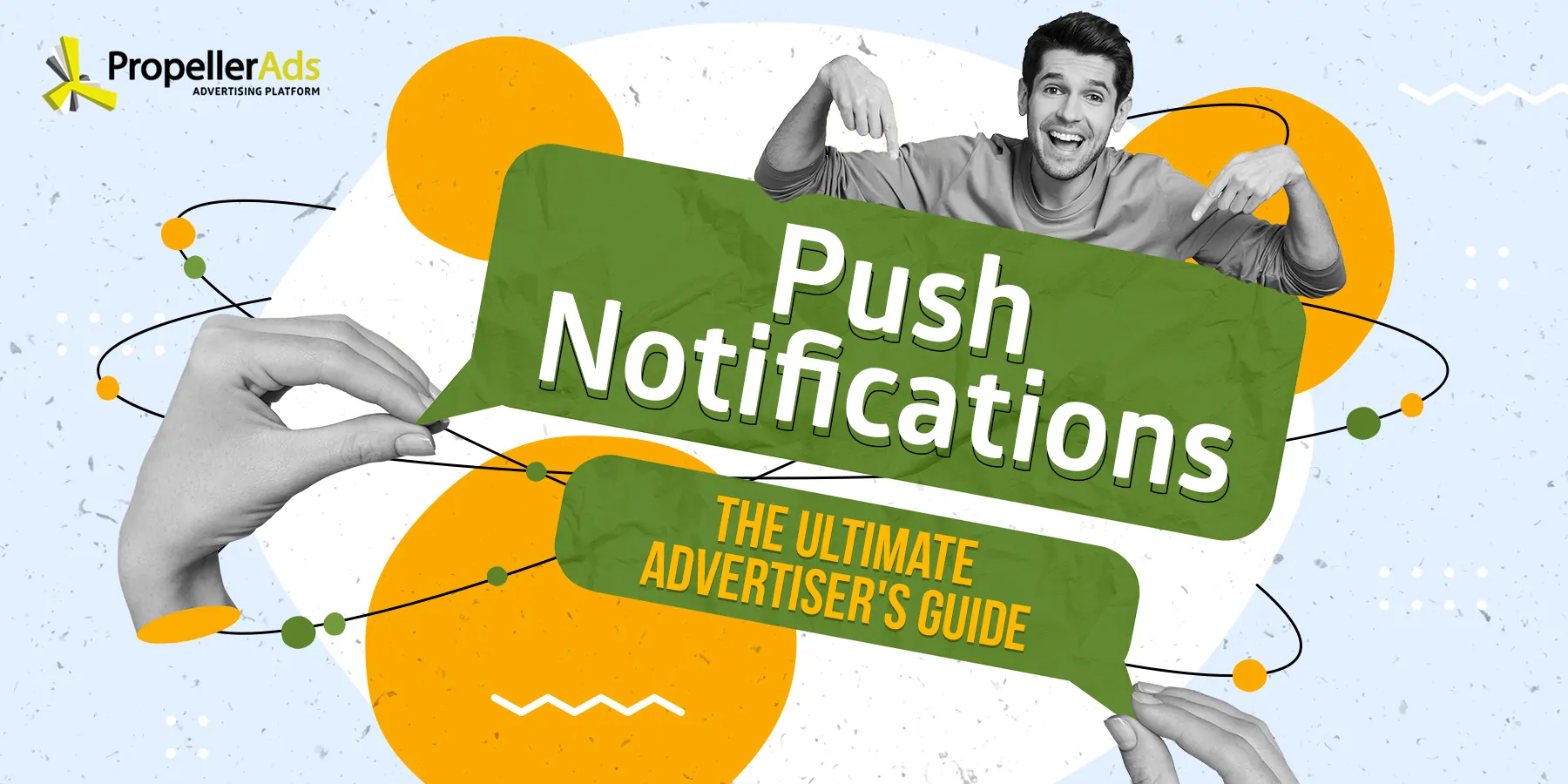How to Use Spy Tools Properly

This post is also available in:
PT
ES
Achieving success with your digital ad campaigns requires a lot of work. And with others investing just as much effort, you need to leverage any competitive advantage you can get. What if you can peek at your competitors’ strategies and refine them for better results? To do this, you need to know how to use spy tools.
But we understand if the term sounds like something the villain from your favorite TV show would use.
Many advertisers and digital marketers use spy tools incorrectly, preventing them from generating revenue. That’s why we’ve created this guide to inform you how to use these tools properly, ethically, and effectively.
You’ll learn what they are, how they work, the types, benefits, and top spy tools in the market.
So, first things first!
What Are Spy Tools And How Do They Work?
Spy tools are specialized software or platforms that allow you to monitor and analyze competitors’ advertising strategies for insights that could improve your own campaigns.
Also referred to by the more diplomatic name of competitive advantage tools, these software are able to uncover insights on a wide range of channels like search engines, native ads, social media, push ads, and display networks.
In case you’re coming across the term for the first time, bear in mind that using these tools is legal. They simply gather publicly available information, showing you what ad campaigns are successful.
Types of Ad Spy Tools
Spy tools can be classified into different groups depending on their functionalities and the kind of ads you can use them on. Here are the types of ad spy tools you can use:
- General Ad Spy Tools: These spy tools can offer competitors research for several advertising channels and networks. Examples are AdPlexity and AdMobiSpy.
- Native Ad Spy Tools: Native ad spy tools are more specialized for native ads. These ads blend promotions with any platform’s organic user experience. Examples are Anstrex, PowerAdSpy, and Native Ad Buzz.
- Push Ad Spy Tools: These spy tools monitor only campaigns that use push notifications. Examples are Mobidea, SpyPush, etc.
- Display Ad Spy Tools: These will monitor and analyze online ad displays on banners, images, texts, videos, etc. Examples of such tools include Semrush’s AdClarity and AdBeat.
How Do Spy Tools Work?
Now, we know what spy tools are and the various types, but how are these tools able to supply the information they give, and where exactly do they get them from?
Spy tools keep tabs on dozens of large advertising databases and the biggest push and popunder traffic providers like Google Adwords, Facebook, Instagram, Twitter, Taboola, Adnow, RevContent, etc.
Not only do they supply information from these sources, but they also apply filters that allow access to specific data sets. For example, users could filter data like landing pages and creatives, messaging, and visual elements from different platforms based on location, operating system, browser, device, etc.
Advertisers into search engine ads can get insights into trending keywords that competitors use in ads through pay-per-click (PPC) spying tools like Semrush. The tools also supply performance metrics like the click-through rate (CTR) and conversion rate.
Benefits of Using Spy Tools
Spy tools present several advantages that give you a strategic edge in the digital world.
Some of you might say that you can just open a website/landing page of your competitors, click, check, roam around a bit, and this will already give you an idea of their strategy. However, we believe this is not how you use spy tools properly.
Serge Abramov, the media buyer, shared some notable things you can do with spy tools and cannot do without them:
GEO and domain issues
“If you are not using a spy tool, most likely you will only see the ad adapted to your GEO. This means that you won’t be able to see the rest, even if you use a VPN (because you have no idea which GEOs your competitor targets).
Spy tools usually use inner bots that gather a full pack of data switching around various IP addresses.
Plus, many advertisers prefer to hide their real domain for different reasons. Some of them use a not-very-legit way to do that, like cloaking. Without a spy tool, you won’t be able to see the real domain name.”
Tips on How to Use Spy Tools
Getting the most of the powerful insights, strategies, and more from spy tools requires that you use the tools properly. Here are the tips and best practices to help you achieve that:
#1. Selecting the Right Tools
When you have specific goals, some spy tools may be better suited to helping you achieve them. For instance, if your targets center around native ads, specialized native ad tools like Anstrex can offer the insights you need, and Mobidea Push Ad Spy Tool can do the same for analyzing push notifications.
So how to use spy tools? Well, the key is to decide what you want and check which tool offers it. You may also need to combine multiple tools depending on your needs.
#2. Monitor Strategic Ad Elements
While most spy tools will uncover the bolts and nuts of ad campaigns, your duty as an advertiser or marketer is to analyze the components you need to improve your campaigns.
Whether it’s persuasive ad copy, engaging creatives, catchy calls-to-action (CTA), or high-performing keywords, checking the metrics would reveal how each performs. However, the aim is not to replicate these elements but to understand the principles that have helped the campaign and can help yours.
#3. Identify Improvement Opportunities
Aside from getting inspiration from a competitor’s ad, it also helps to identify aspects you can improve on. Doing this gives you an immediate opportunity to create a campaign that performs better. You could optimize the copy, design better creatives, etc.
- Say, your competitor’s landing page has an engaging copy but lacks keywords. This is your opportunity to beat them by actually using keywords.
- Special offers should be immediately visible. If your competitor doesn’t provide anything like that right on the landing page or creatives, you can do that to convince users to choose you instead of them.
Example:
Landing page with an immediate special offer to grab (we can see the wheel with bonuses right after opening the website):

Unlike this website, where we don’t really see anything informative after we get to the landing page, here:

Even though the website currently has nice discounts, to learn more about that, you should take additional actions (aka minimized conversion chances) – clicking the Offers page:

Don’t miss any opportunity to take the competitive advantage.
#4. Replicate Working Strategies
Defining how to use spy tools, the first thing one understands is that the main objective of this practice is to learn about the strategies that have worked for them. So you can replicate the same. Avoid copying strategies directly. Instead, focus on only those that align with your brand identity and fit into campaign objectives.
Elements you can replicate include ad copies, visual creatives, landing page layout, and specific targeting strategies. Your brand messaging and selling points should be unique, and you should infuse your brand tone with original offers and features.
Here is a comment regarding this point:
“When getting inspiration from the ads of your competitors, you should forget about your aesthetic taste. Never rely on something you find attractive, good-looking, and interesting. Your aim is to make a profit, right? Therefore, replicate something that can bring it and remember that those might not be the most kick-glove methods.
Pay attention to advertising elements that stay for long and perform well. Also, have a sharp eye for things that are repeating from one campaign to another.”
#5. Monitor Performance and Adjust Regularly
Sometimes, strategies that are effective for competitors may not work for you. Other times, the combination may not be right. That’s why you should always monitor how your campaigns are doing.
Set key performance indicators (KPIs) and use them to compare your performance with competitors. You can experiment with strategies, switch things around occasionally, and change the combination of approaches to see what works.
And here is another tip from Serge Abramov:
“I have an efficient recipe to share here. For instance, you work with the Finance vertical, and your preferred format is Push advertising. What you can do is check other Finance advertisers, but instead of Push, you should open Popunder, Interstitials, and other formats.
This is a great way to find out if another format performs better for a certain vertical.
And yes, the same works with any other settings. Just leave one or two of your campaign specifics and test fit it with any other campaign elements/settings.”
#6. Abide by Ethical Guidelines
Ethical guidelines protect your business from infringement of rights and lawsuits. Protect your data and only use spy tools after understanding the legal standards guiding their use.
For instance, you cannot directly copy any element from a competitor, and you must always respect their privacy.
Top Popular Spy Tools for Advertisers
Now you know how to use spy tools, so let’s check these – the best spy tools advertisers use to do research.
All about the best spy tools for advertisers and media buyers
- Free Trial: No
- Pricing: $149 – $249/month
2. Mobidea Push Ads Spy Tool (Best Push Ads Spy Tool)
- Free Trial: No
- Pricing: $90 – $140/month
3. Anstrex (Best Native Ads Spy Tool)
- Free Trial: No
- Pricing: $70 – $220/month
4. Semrush’s AdClarity (Best Display Ads Spy Tool)
- Free Trial: Yes
- Pricing: $169 – $180/month
5. AdMobiSpy (Best Alternative Spy Tool)
- Free Trial: No
- Pricing: $49 – $599/month
6. Google Trends (Best for Competitors’ Keyword Research)
- Pricing: Free
7. Meta Ad Library (Best for Facebook Research)
- Pricing: Free
To Sum Up
Spying tools are valuable for gaining insights to improve ad campaigns and the revenue you get from them. These tools can uncover effective ad creatives, working ad copies, appropriate target audiences, and optimization opportunities.
However, even if you know how to use spy tools now, the success of your ads depends on not just that, but how much insight you can gain from them. This requires using them properly, and you can do just that with the tips above.
Remember to clarify your goals before you start, pay attention to the most important elements depending on your needs, experiment with findings, and use the tools responsibly.
Spy tools are imperfect, but they can give you the advantage you need to succeed as a digital marketer, even as the landscape continues to evolve.
Do you have a favourite spy tool? Or maybe you need a recommendation? Then welcome to our Telegram chat!






